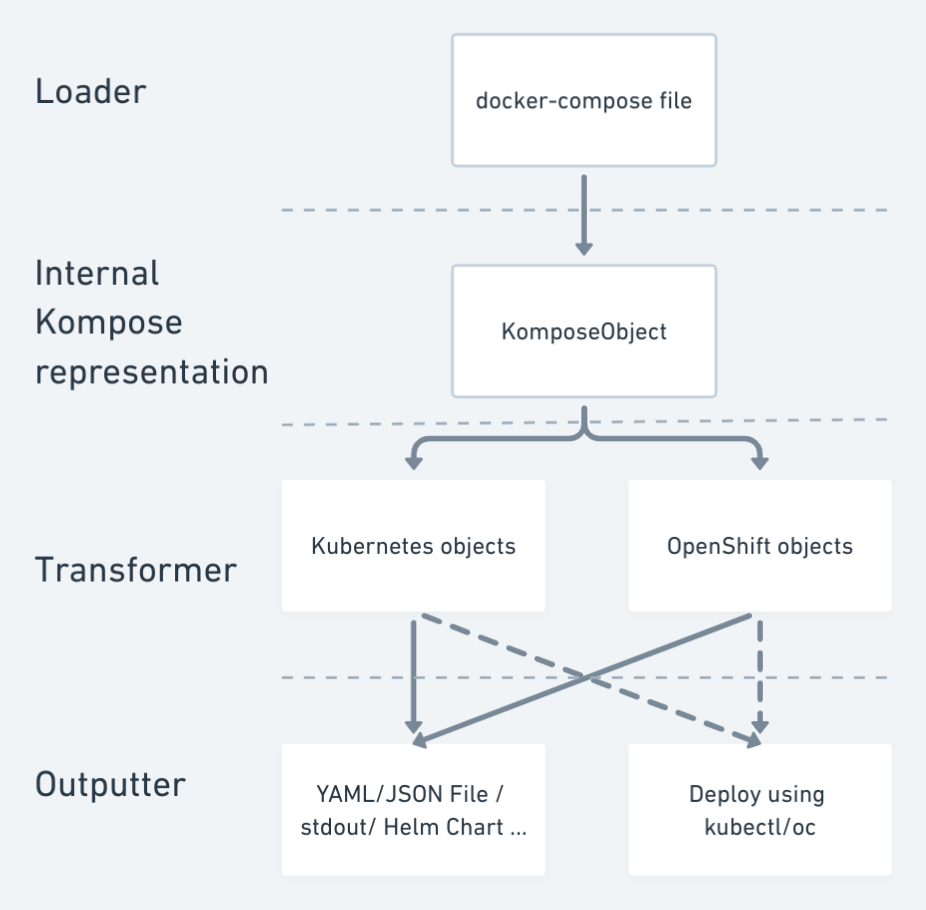Architecture and Internal Design
kompose has 3 stages: Loader, Transformer and Outputter. Each stage should have a well-defined interface, so it is easy to write a new Loader, Transformer, or Outputters and plug it in. Currently, only Loader and Transformer interfaces are defined.

Loader
The Loader reads the input file now kompose supports Compose v1, v2 and converts it to KomposeObject.
Loader is represented by a Loader interface:
type Loader interface {
LoadFile(file string) kobject.KomposeObject
}
Every loader “implementation” should be placed into kompose/pkg/loader (like compose). More input formats will be supported in the future. You can take a look for more details at:
KomposeObject
KomposeObject is Kompose internal representation of all containers loaded from input file. First version of KomposeObject looks like this (source: kobject.go):
// KomposeObject holds the generic struct of Kompose transformation
type KomposeObject struct {
ServiceConfigs map[string]ServiceConfig
}
// ServiceConfig holds the basic struct of a container
type ServiceConfig struct {
ContainerName string
Image string
Environment []EnvVar
Port []Ports
Command []string
WorkingDir string
Args []string
Volumes []string
Network []string
Labels map[string]string
Annotations map[string]string
CPUSet string
CPUShares int64
CPUQuota int64
CapAdd []string
CapDrop []string
Entrypoint []string
Expose []string
Privileged bool
Restart string
User string
}
Transformer
The Transformer takes KomposeObject and converts it to target/output format (currently, there are sets of Kubernetes/OpenShift objects). Similar to the Loader, Transformer is represented by a Transformer interface:
type Transformer interface {
Transform(kobject.KomposeObject, kobject.ConvertOptions) []runtime.Object
}
If you wish to add more providers containing different kinds of objects, the Transformer would be the place to look into. Currently, Kompose supports Kubernetes (by default) and OpenShift providers. More details at:
Outputter
The Outputter takes the Transformer result and executes the given action. For example, action can display results to stdout or directly deploy artifacts to Kubernetes/OpenShift.